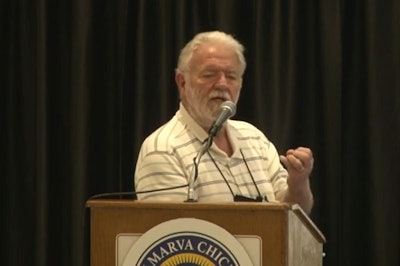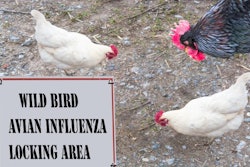
Composting has proven to be a convenient, affordable, socially acceptable and environmentally acceptable way to dispose of poultry carcasses, but in order to be effective and biosecure, there is a certain “cookbook” that poultry producers should follow.
Dr. Gary Felton, University of Maryland Extension agricultural engineer, offered that cookbook during the Delmarva Chicken Association (DCA) 56th National Meeting on Poultry Health, Processing and Live Production, held October 3-5 in Ocean City, Maryland.
There are eight basic steps to follow in effective composting, according to Felton. Those are:
1. Start with a bed of wood chips or fresh litter
That bed should be between 6 inches and 12 inches thick. You will want to have litter material that has a lot of carbon in it and the ability to absorb.
2. Add a layer of mortalities
The layer will range in hisght from six inches to nine inches, but essentially the height of one mature bird or a couple of day-old chicks.
3. Keep carcasses away from the sides
Bird carcasses need to be at least six inches away from the sides. The sides of the compost area do not heat up, and when it doesn’t get hot, it doesn’t kill the pathogens and composting is simply not done.
4. Thoroughly wet the feathers
The reason feathers should be wet is because that’s a good indication of how much water to put on, said Felton. The sawdust or letter that is underneath the bird needs to be wet enough that the microbes that are active will act on the litter and the bird both.
5. Put a 6-inch cover of litter above the mortalities
When you place this litter cover, be sure that some of the litter is fresh, because you will need fresh carbon.
6. Repeat layers of birds and litter
Do this process as needed.
7. Add an extra 6 inches of old litter
The old litter in this layer is often referred to as a daily cover. The goal is to make sure that the compost temperature gets up to 133 F. At that temperature, pathogens such as avian influenza virus should be eliminated within about 5 minutes.
8. After the temperature drops, turn the compost
The temperature will gradually drop. Then it reaches about 115 F, it is time to “turn the birds”. The birds should be mostly composted in 10-14 days if all procedures are followed properly, he said.


















